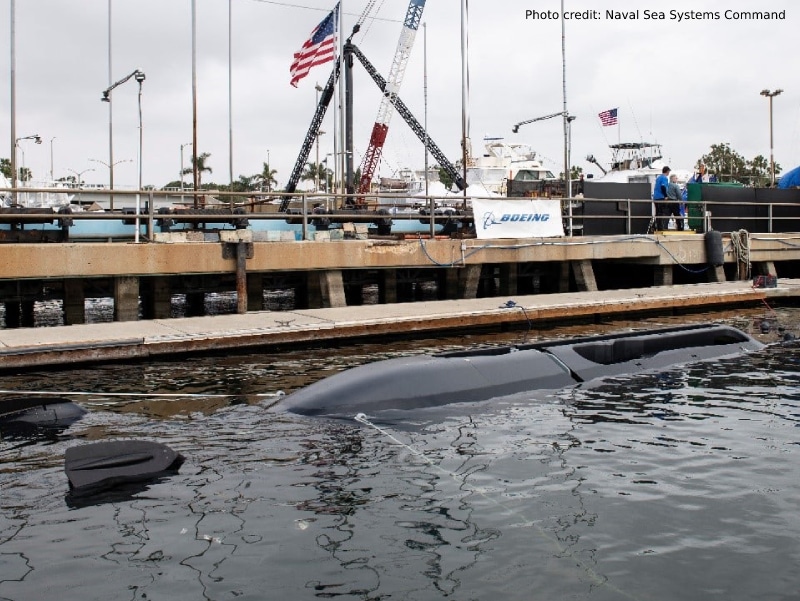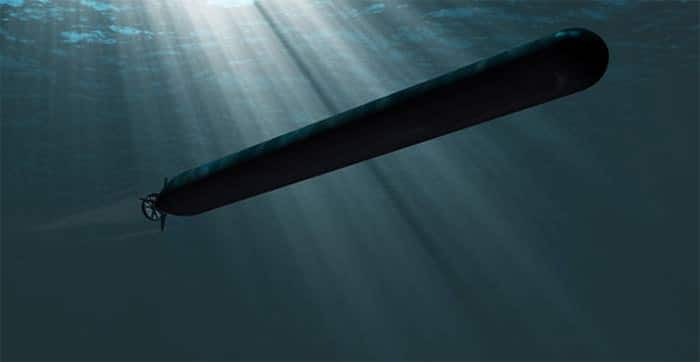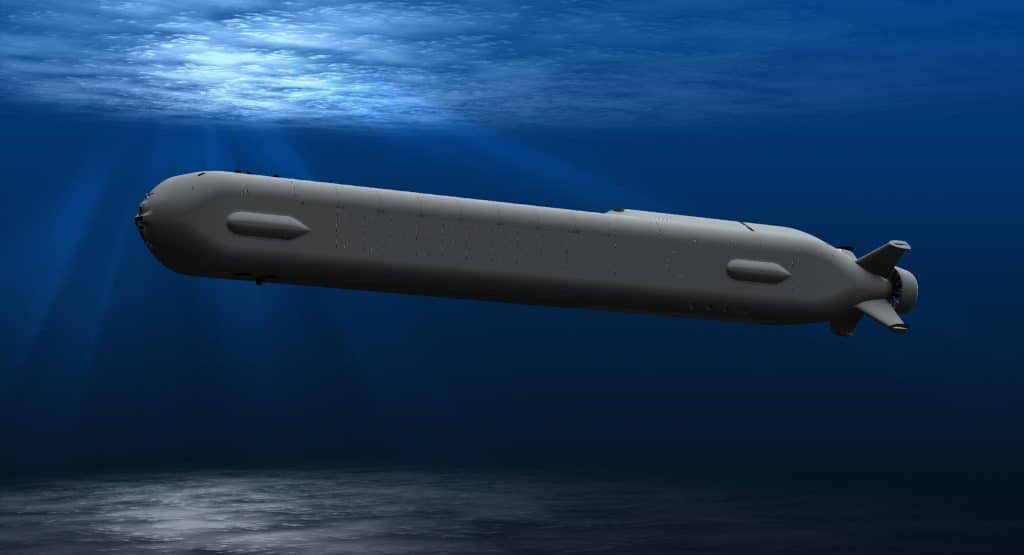
Verzija teksta na srpskom jeziku autora Marka Višekrune dostupna je na sledećem linku: Tekst na srpskom jeziku
With a view to maintaining its dominance on the Seven Seas in the 21st century, the US Navy has launched multiple auspicious projects in the recent period. Among them, one undersea platform seemingly attracted special attention – the concept and construction plan of modern unmanned submarines of the Orca type. Such a revolutionary breakthrough resulted in the creation of an underwater vessel - a drone able to almost imperceptibly bring a wide variety of weapons closer to enemy shores sailing through their waters, thus directly threatening naval and land targets of the enemy. However, the decision to gradually develop this type of undersea vehicle goes back a long way.
After observing potentially weak points in the Armed Forces’ capacities which could lead to the failure of prospective missions, the US Department of Defence indicated in 2015 the need to develop advanced underwater drones capable of carrying out a wide range of missions. This request was urgently forwarded to the Navy in the Joint Emergent Operational Need (JEON) format, which is why its implementation was deemed a priority. It was necessary to approach the problem in the shortest possible time, and as one of its solutions, the concept of the first extra-large unmanned undersea vehicle of a new type, named Orca, was presented in 2017.
The initial stage of the platform construction, which included planning, design and the development concept, was designated to Boeing and Lockheed Martin, which were, according to official and publicly available information, individually approved funds of about 43 million dollars. After the creation of two proposed models, the US Navy decided to invest in Boeing's concept. In stage two of the development, Boeing was tasked with creating, testing and delivering five prototypes of Orca unmanned undersea vehicles together with Huntington Ingalls Industries. It was estimated that the final cost would be up to seven times higher than the cost of the initial phase, that is, that the price would amount to between 274 and 281.5 million dollars. According to the original plan, the consignment of these prototypes was supposed to be realised by the end of 2022.
After the Orca’s maiden voyage on April 28, 2022, in Huntington Beach, California, the first extra-large unmanned undersea vehicle soon underwent its first tests in the water. As expected, a large amount of data that can give a more accurate picture of the characteristics and capabilities of the new underwater drones is still not available to the public. Nevertheless, it is practically certain that these platforms will utilise high-capacity lithium-ion batteries in water, just like Boeing’s Echo Voyager platform, based on which the Orca was created. This power supply method allows vessels to spend several weeks underwater, or, according to some estimates, up to 90 days; after their discharge, a diesel generator recharges the batteries while the submarine is on or near the water’s surface.

The propulsion issue solution allows submarines of this type to move almost silently under the surface, thus reducing the chances of enemy detection to a minimum. The budding underwater vessel concept is characterised by two novelties – modularity and open architecture, which encourage successful engagement in various missions and allow submarines to quickly and efficiently alter their depth while moving. The core of the underwater drone comprises propulsion and control blocks and blocks for power supply and energy distribution, sections for guidance, oversight, navigation, autonomous operation and increasing situational awareness, as well as a communication block and a section for mission sensors. Owing to the vessel’s modularity, some of the internal components can be additionally strengthened or removed according to mission needs, such as two additional batteries and a weapons arsenal (per official announcements from the Navy). This secures more power for the fulfilment of tasks which demand the utilisation of an increased payload or platform range. The modular cargo space and the advanced autonomous system enable the Orca to be efficiently exploited over the course of several months and to communicate with its home base located far from the operation zone without the need for any physical contact by naval personnel.
The estimated displacement of this unmanned vessel is around 80 tons, while its length will amount to 26 meters, with 16 metres conceptually inherited from the Echo Voyager platform and 10 metres originating from the added modular space. Thanks to the space that can accommodate an additional 8-tonne payload, this underwater vessel will be able to participate in various missions, such as monitoring the area below and above the water surface, partaking in electronic and anti-submarine warfare, combat missions and mine laying. Autonomous navigation is estimated to operate for some 6,500 nautical miles, that is, over 12,000 km, when moving at an optimal speed of 3 knots (5.5 km/h), while the maximum sailing speed is 8 knots, that is, close to 15 km/h. The American Orca will depart for its assigned missions from the Navy harbour or by being launched from larger ships.
The navigation system will be based on Kalman filters and an inertial navigation system, as well as on the Doppler depth records - depth sensors and acoustic LBL (Long Baseline) transponders. Very high precision during movement is, hence, ensured, while the Orca can also use GPS signals at extremely low depths or on the water’s surface. The ability to actively avoid obstacles is made possible thanks to the FLS (Forward-Looking Sonar) covering the area in front of the vessel and the autonomous algorithm for obstacle avoidance, which, in conjunction with the Doppler depth records, provides exceptional abilities when following the terrain and moving on the seabed. Improved seabed mapping will also be possible thanks to the Raytheon PROSAS PS60-6000 synthetic aperture sonar that can be placed in the previously mentioned additional module.
Secure communication is based on the Inmarsat IV, Iridium, Wi-Fi and FreeWave systems used for commanding, controlling and re-planning missions while the vessel is performing near-surface operations, as well as on the acoustic communication for issuing commands and controls during underwater operations. The Orca unmanned undersea vehicles are characterised by network-centric warfare as they have the ability to mutually interconnect and jointly carry out assigned missions, with the primary task being to place and destroy underwater mines, gather information and map the seabed, fight against enemy submarines, ships and other vessels, engage in anti-electronic combat, and to attack the enemy land targets. These tactical and technical characteristics allow Orca to enter enemy waters without exposing the personnel to risk and, taking into account its size, to also block important waterways.
In order to descend to a greater depth, this unmanned drone submarine retains oil in its chamber and, thus, allows the tanks in the hull to intake the maximum amount of water. On the other hand, when lowering the depth and surfacing, the oil from the chamber is pumped into the tank, pushing the water in it out of the vessel. Although it might seem that the idea of leaking water into watertight areas of the vessel can potentially endanger its vital components (that must constantly be dry), such as batteries and electronics, placing them in waterproof blocks solves this issue.
The Orca will also be distinguished by a different range of weapons in its arsenal, with a modern autonomous anti-submarine weapon drawing special attention - the new Hammerhead mine. This cylindrical underwater mine can fire an integrated torpedo at enemy submarines, and it consists of several modules: a mooring module, which ensures that the mine remains on the seabed, energy module that powers the system, sensor module that serves as a sonar device for the detection of nearby vessels, and a combat module featuring a modified Mark 54 Lightweight torpedo weighing more than 600 pounds (over 272 kg). The Hammerhead rests on the seabed, and after its sensors register the arrival of an enemy submarine in its vicinity, they launch guided torpedoes. Even though this mine design dates back to the 1970s, their refinement, modification and modern implementation represent a significant step forward for the US Navy in the segment of protecting its territorial waters.
Unlike in the case of unmanned platforms developed for use on land or in the air, communication and control represent a grave challenge for underwater drones. American experts successfully made the first step towards mastering modern radio control skills during the trials and testing of the unmanned ship named Sea Hunter. This experimental vessel from the Sea family came as a result of Vigor Industrial’s efforts and is intended to detect and track enemy submarines. Its main feature is the ability to be operative 24 hours a day and to autonomously spend up to 90 days on missions up to 10,000 nautical miles away from the command post.
Although managing over radio control represents the most common solution at the moment, its key disadvantage is the low penetration of radio waves underwater. Therefore, its implementation is not reliable enough, requiring submarines and other underwater vessels to surface to receive information, thereby risking detection by adversaries. The solution to this issue applied in the case of unmanned submarines of the Orca type is the use of artificial intelligence, which allows the undersea vessel to autonomously adapt to new environmental conditions in certain situations and, in accordance with them, make crucial decisions for the further course of the mission.

The development of the Orca project was, nonetheless, also marked by problems, seeing that the manufacturer did not timely redesign and modify several critical components taken from the older autonomous underwater vessel - Echo Voyager - despite the requirements. Even though it was assumed that certain solutions would not have a significant impact on the efficient exploitation of the new vessel, it was only after the production of its prototypes commenced that certain segments were noticed to have great repercussions on the entire development concept. One of the key criticisms was related to the absence of a redesign, which implied changes to the hull itself in order to adapt the space for storing the payload. Orca’s predecessor, the Echo Voyager, was lowered into the water using an elevator, while the US Navy put in an explicit request for the Orca to be lowered using a crane. The need to install batteries of higher power and to alter the materials used to make tanks exposed to high pressure were also commented upon. All this contributed to the exceeding of the previously planned budget and, together with the consequences of the COVID-19 pandemic, resulted in the postponement of the production deadlines and the announced completion of production in early 2024.
Despite the initial high price of developing prototypes, the total construction cost of this unmanned undersea vessel still amounts to less than a tenth of the value of modern submarines, such as those of the Virginia type, whose value is around 2.8 billion dollars. This very argument speaks in favour of how economically profitable the notion is, seeing that this enables the production of a large number of units, providing greater security and better coverage of substantial areas of territorial waters.
Besides the USA, Russia, China, and Japan are working on improving and implementing projects with similar characteristics, which also speaks in favour of the great potential of the unmanned underwater vessel concept. Thus, the vision from the second half of the 20th century about revolutionary changes in the domain of war and the expanding use of unmanned platforms is now experiencing its full momentum. The further development of the technology will undoubtedly lead to the increased use of robotic platforms, which will function with full autonomy and minimal engagement of the human factor.
Translated and proofread by: Milica Milosavljevic
Author: Marko Višekruna

